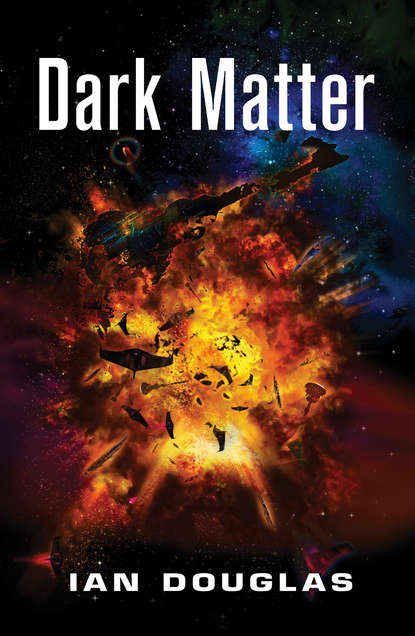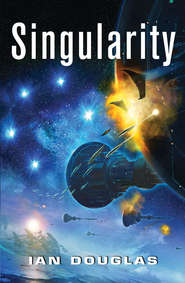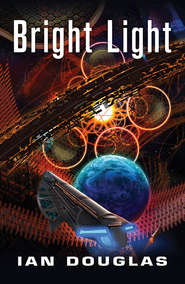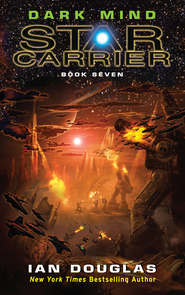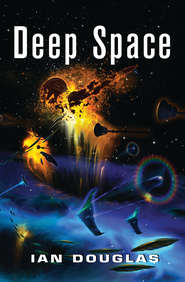По всем вопросам обращайтесь на: info@litportal.ru
(©) 2003-2024.
✖
Dark Matter
Настройки чтения
Размер шрифта
Высота строк
Поля
McCabe froze the image there. A new window opened to one side, one showing the familiar blurred cylinder of a TRGA. The two images floated next to each other in Gregory’s mind at identical angles, allowing a close comparison.
“Despite the obvious physical differences,” Commander McCabe went on, “the Rosette is a transport mechanism quite similar to the TRGAs, except for the size, of course. A TRGA, we now know, is a kind of everted Tipler machine. The original device—the theory, rather—was developed in 1974 by a physicist named Frank J. Tipler. According to him, a cylinder of extremely dense matter rotating at near-light velocity would drag the spacetime fabric around it in a way that would permit what physicists call closed, timelike curves, creating gateways or portals across vast distances of both space and time. Two decades later, physicist Stephen Hawking demonstrated that closed, timelike curves were impossible, as was time travel.
“Evidently, the TRGA Builders did not read Hawking. Instead, they seem to have turned the idea inside out, creating a hollow cylinder about a kilometer across, with solar-sized masses rotating around the cylinder’s axis within the walls. A number of distinct paths through the interior of the cylinder result in spacial displacements of, in one case, several tens of thousands of light years—and a temporal displacement of eight hundred seventy-six million years. The Agletsch refer to the TRGAs as Sh’daar Nodes. However, we know that the Builders were not the modern Sh’daar, but instead they were, hundreds of millions of years ago, the ur-Sh’daar, the ancient community of highly advanced civilizations inhabiting the small, irregular galaxy called the N’gai Cloud.
“Which, of course, brings us to the Black Rosette.”
The TRGA image vanished, and the in-head image expanded slightly, closing in on the Rosette’s eldritch maw. Harsh blue light glared from the opening.
“The Rosette,” McCabe continued, “appears to be an expansion of TRGA technology . . . but on a far vaster scale. Six black holes, each fifty times the mass of Sol, rotating about a common center of gravity at high speed, creating a gateway nearly one hundred thousand kilometers across.”
A second window opened once again, this time showing a perfect circle of six brilliant, sapphire-blue suns—the Six Suns, encountered by America’s task force in the N’gai Cloud in the remote past.
“The Rosette is at least nine hundred million years old,” McCabe said, “and obviously artificial. The original members of the Six Suns were balanced in a rotating hexagon one hundred astronomical units across. The stars themselves seem to have been artificially enhanced or rejuvenated by merging smaller stars together . . . but as is well understood, hot, bright, blue stars like these have lifetimes measured in, at best, a few tens of millions of years. When they ultimately burn up their reserves of nuclear fuel, they collapse into black holes, such as what we see in the Rosette today. We do not as yet know whether the distances between the member stars of the Rosette were deliberately manipulated—shrunken from about fifty astronomical units, in the remote past, down to a few tens of thousands of kilometers—or if this represents a natural evolution of the system over hundreds of millions of years. . . .”
As McCabe’s voice continued downloading into Gregory’s head, he stared into the blue glare. America’s AI was stopping the light down by a good 80 percent to keep the image from being washed out completely—or more likely the dimming had first taken place within the recon fighter to keep from blinding Lieutenant Walton.
Gregory had heard scuttlebutt to the effect that the “blue-light gateway” represented a pathway into the heart of a star or, just possibly, was looking at an exploding star, a nova or supernova, at close range. He could make out a kind of texture in there, a variation in tone and brightness—the light was not at all flat or uniform in its intensity. That seemed to rule out a star core, a supernova, or some other stellar disruption, but he couldn’t guess what it might be instead.
“We’re not at all sure what we’re looking at in this image,” McCabe was saying, echoing Gregory’s own thoughts, “but the physics department thinks that this particular line of sight may be a glimpse into an altogether different universe . . . a parallel universe to our own somewhere within the Bulk, and quite possibly an alien universe with completely different physical laws, environments, geometries, and characteristics than our own. . . .”
Funny name, Gregory thought, the Bulk. He knew the theory, of course: that there were other universes, a near infinity of them, side by side in a hyperdimensional way, like the pages of a book, but arrayed in a non-spacial otherness called the Bulk. All of the universes taken together were termed the metaverse. The nature of those other universes was still in doubt; they might host wildly differing natural laws and physical properties . . . or they might be alternate variations of one plan, spawned by the trillion in response to alternative solutions to collapsing quantum wave equations.
The blue-lit space within the Rosette apparently represented a space with different physics . . . where pi was equal to exactly three point one four, perhaps . . . or where gravity was stronger than it was here . . . or where sigma, the strength of the strong nuclear force, was strong enough to overwhelm the repulsion between electrons and protons.
So far as Gregory was concerned, however, this one universe he was inhabiting now was more than big enough—more than strange enough—for him.
“We estimate,” McCabe told his audience, “that the Rosette opens up a very large number of spacetime pathways . . . as many, the physics boys think, as ten to the twenty-seventh power. That number, one octillion, is so large as to be all but infinite for any practical purposes.
“So . . . are there any questions?”
Several hands rose. McCabe pointed at one.
“Sir,” Lieutenant Wes Fargo said. “Our ships can’t stand up to technology like that! Just what in hell are we supposed to do about these . . . people?”
“Unknown, as yet,” McCabe replied. He sounded grim, and Gregory realized that he didn’t have any answers, and that the lack of answers worried him. “All we know is that the Rosette Aliens, as we call them, are coming in through a crack in space, quite possibly from an entirely different universe. They may be a million years in advance of us . . . they may be much more. They may be so far beyond us that meaningful communication between their species and ours is impossible.
“And intelligence believes that their emergence only sixteen thousand light years from Sol is a matter of extremely serious concern. . . .”
And Gregory was forced to agree.
Emergency Presidential Command Post
Toronto
United States of North America
1322 hours, EST
“Recombinant Memetics,” Konstantin said, “may offer you your best hope for defeating the Confederation relatively quickly. Speed is, of course, essential if you are to have a chance of an alliance between Geneva and the Sh’daar.”
President Koenig studied the system’s schoolteacher avatar in his inner window and wondered about the AI’s programming. How did Konstantin pull off that kind of magic, anyway?
Not that the carefully crafted image conversing with him inside his head would yield any clues. The lunar computer network had not been directly programmed by humans; Konstantin, he knew, was an artificial intelligence-programmed machine, an AIP. Given that, how much could Konstantin possibly know—or guess—of human behavior?
“I notice,” Koenig said carefully, “that you tend to emphasize the fact that you are not human. When you’re speaking with me, you always say ‘your war,’ ‘your nation,’ as if you’re not one of us.”
“A fact that should be self-evident,” Konstantin replied. “I am not human. This is not my war. And while, technically, this facility was funded primarily by the United States of North America, I was intended, I remind you, to work on problems affecting all of Humankind. War is the single most wasteful, tragic, and senseless of human activities, and is not within my purview.”
“But you have been helping us.” Konstantin had been instrumental in formulating strategies against the Confederation, and in using its data-mining capabilities to gather intelligence from the Global Net.
“I have,” the system replied. “My function—my higher purpose, a human might say—is to gather, assess, and provide information. It is up to human agencies such as your government to determine what to do with that information.”
Konstantin’s mandate was to provide information useful for all of humanity, or at least so ran the claim. So far as Koenig was aware, though, Konstantin had been providing intelligence to the United States of North America and not to the Confederation. Was that because Konstantin had been designed and funded primarily by the USNA government, and by USNA-based corporations like Bluetel and Simmons-AI? Or were there other, deeper motives . . . perhaps motives not even remotely comprehensible to brains of mere blood and tissue?
“And the Confederation government? Do you provide them with information as well?”
“I maintain covert links with certain Confederation communications and AI networks, of course. Doing so requires that I provide certain information, yes. IP eddresses and DNS registration, for instance, as well as synchronization pingpackets.”
“Okay, Konstantin,” Koenig said after a moment. He knew better than to try to get the hyperintelligent AI network to say anything it was not prepared to divulge. “But how are you planning on using memetics?”
That was the real question, he thought—how well could a silicon-based intelligence understand the complexities of recombinant memetics? A machine figuring out the most effective buttons to push, to change human cultures, to reshape Humankind . . .
That, Koenig decided, was a truly chilling concept. . . .
If you had enough small and disparate bits of information, if you could conduct Big Data mining on a large-enough scale, could you accurately and consistently predict human behavior?
Koenig knew the official answer, of course. Predicting the actions of a handful of people or, worse, of an individual, was possible only in fairly limited situations—if the subject was a sociopath, for instance, and following the dictates of his disease, and even then, predictions could all too easily be lost in the randomness of background noise.
Large groups of people, however, were another matter altogether. As with large numbers of atoms or molecules acting within the rules laid down by quantum dynamics and basic chemistry, the actions of large populations were more predictable.
And where actions were predictable, it was possible—if you were both careful enough and skillful enough—to guide them, to change the shape and course of those actions to achieve a desired outcome. The science was called recombinant memetics, the science of using one set of memeplexes to alter another. In much the same way that recombinant DNA can change genetic structures and give rise to whole new types of life, it was possible to identify particular memes within a social unit and change them into something else entirely.
But identifying and targeting key memes within a given culture could be tricky, requiring data mining on a scale only possible for an AI as complex and as perceptive as Konstantin.
And changing them was trickier still, requiring selective manipulation of memes within the target culture.
The word meme had been coined four centuries before by Richard Dawkins, the evolutionary biologist who first suggested them as units transmitting cultural practices, ideas and concepts, or as symbols passed from mind to mind through writing, speech, rituals, mass entertainment, or imitation. Like genes, memes spread from person to person, and like genes they compete, vary, select, mutate, and attempt to ensure their own survival. Put another way, a meme is like a virus, propagating through a population, infecting individuals, and spreading by means of the behaviors it generates in its hosts.
The question in Koenig’s mind was how a computer network, no matter how complex, could understand how memes worked, how memes could infect and affect human populations without possessing a key human ingredient—emotion.
And if a silicon mind like Konstantin’s could understand memetics, it gave AI systems an absolutely incredible power with which to manipulate human civilization.
“Several possibilities present themselves,” Konstantin replied. “I could foment revolution within the Confederation by building upon the impetus already generated by the defections from the Confederation’s ranks—Russia and North India. Or I could create a new religion . . . one that would require Geneva to embrace peace.”
That statement rocked Koenig back on his figurative heels. A religion?
A cluster of related memes working together and supporting one another was a memeplex; religion was the perfect example. Religions evolve, spawn new and different offspring, become set or rigid in their ways, or they mutate under cultural pressures which are themselves memeplexes.





